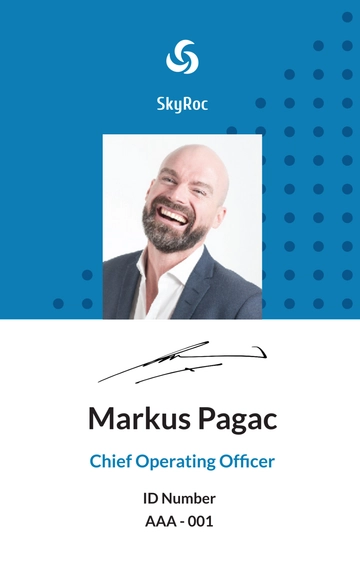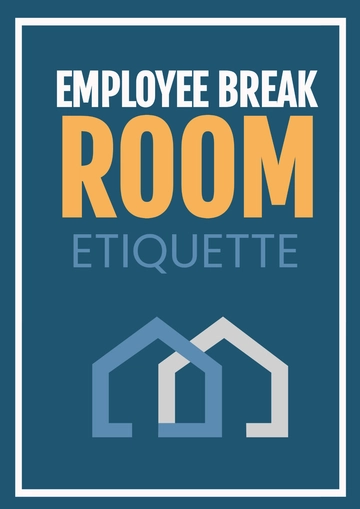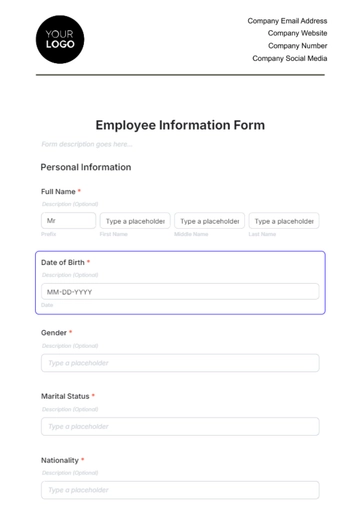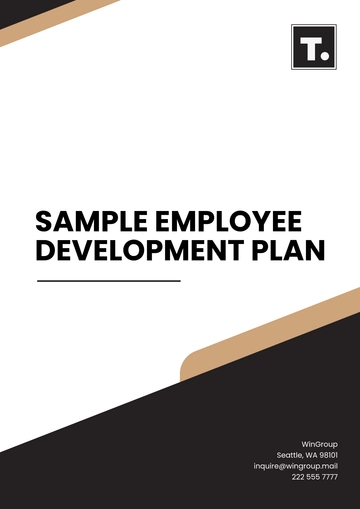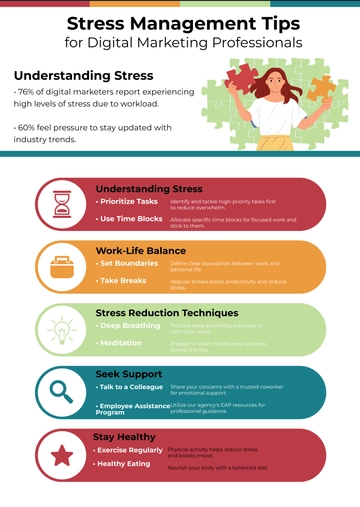Free Restaurant Employee Performance Report

I. Introduction
A. Purpose
The purpose of this Restaurant Employee Performance Report is to provide a comprehensive evaluation of the performance of staff members at [Your Company Name] during the period of [specify period]. This report aims to identify areas of excellence, opportunities for improvement, and training needs to ensure the delivery of exceptional service to our customers.
By analyzing various performance metrics and conducting individual evaluations, this report seeks to offer insights into the effectiveness of current operational strategies, the quality of customer service provided, and the overall performance of employees in their respective roles.
Ultimately, the findings and recommendations presented in this report will assist the management team in making informed decisions regarding employee development, training initiatives, and performance management strategies, with the overarching goal of enhancing the customer experience and driving business success.
B. Scope
This report encompasses the performance evaluation of all employees working across various roles within the restaurant, including servers, kitchen staff, hosts/hostesses, and managers. The evaluation period covers [specify start date] to [specify end date].
Performance data and feedback collected during this period will be analyzed to assess individual and team performance, identify trends, and address any challenges or areas of improvement that may impact the overall efficiency and profitability of the restaurant.
It's important to note that while this report primarily focuses on performance evaluation, it also serves as a tool for recognizing and celebrating employee achievements, fostering a culture of continuous improvement, and reinforcing the values and standards of excellence upheld by [Your Company Name].
C. Audience
The primary audience for this report is the management team at [Your Company Name]. This includes restaurant managers, department heads, and other key decision-makers responsible for overseeing day-to-day operations and implementing strategic initiatives.
Additionally, frontline supervisors and team leaders may also benefit from the insights provided in this report, as they play a vital role in coaching and supporting employees to achieve their performance goals and deliver exceptional service to customers.
While the management team is the main audience, it's essential to ensure that all employees are aware of the objectives and outcomes of this performance evaluation process, promoting transparency, accountability, and a shared commitment to excellence across the organization.
II. Performance Metrics Overview
A. Key Performance Indicators (KPIs)
Key Performance Indicators (KPIs) serve as essential benchmarks to measure the effectiveness and efficiency of restaurant operations and employee performance. The following table presents a summary of the KPIs monitored during the evaluation period:
KPI | Description | Target | Actual | Variance |
|---|---|---|---|---|
Customer Satisfaction | Measure of customer feedback and ratings | [95%] | [92%] | [-3%] |
Order Accuracy | Percentage of orders correctly fulfilled | [98%] | [97%] | [-1%] |
Average Table Turnover | Average time taken to serve a table | [30 minutes] | [28 minutes] | [-2 minutes] |
Employee Turnover Rate | Percentage of staff leaving the company | [15%] | [10%] | [-5%] |
Customer Satisfaction:
Description: Customer satisfaction is a crucial indicator of the overall dining experience provided by the restaurant. It encompasses various factors such as food quality, service efficiency, ambiance, and overall customer service.
Target: The target customer satisfaction rate is set at [95%], indicating the desired level of satisfaction among diners.
Actual: During the evaluation period, the actual customer satisfaction rate was [92%], indicating the percentage of customers who reported being satisfied with their dining experience.
Variance: The variance of [-3%] reflects the difference between the target and actual customer satisfaction rates, highlighting areas where improvements may be needed to meet performance goals.
Order Accuracy:
Description: Order accuracy measures the percentage of orders that are correctly fulfilled by the restaurant staff compared to the total number of orders received. It reflects the precision and attention to detail in processing customer orders.
Target: The target order accuracy rate is set at [98%], indicating the desired level of accuracy in fulfilling customer orders.
Actual: The actual order accuracy rate achieved during the evaluation period was [97%], representing the percentage of orders that were accurately fulfilled.
Variance: With a variance of [-1%], the actual order accuracy rate slightly missed the target, suggesting areas for improvement in order processing and communication between front-of-house and back-of-house staff.
Average Table Turnover:
Description: Average table turnover refers to the average time taken to serve a table from the moment customers are seated until they complete their meal and leave the restaurant. It is a critical measure of service efficiency and table management practices.
Target: The target average table turnover time is set at [30 minutes], indicating the desired duration for serving a table and maximizing restaurant capacity.
Actual: The actual average table turnover time observed during the evaluation period was [28 minutes], reflecting the average time taken to serve each table.
Variance: With a variance of [-2 minutes], the actual average table turnover time exceeded the target, indicating efficient service delivery and effective table management practices.
Employee Turnover Rate:
Description: Employee turnover rate measures the percentage of staff members who have left the company during the evaluation period. It is a key indicator of employee retention and organizational stability.
Target: The target employee turnover rate is set at [15%], indicating the desired level of employee retention within the restaurant.
Actual: The actual employee turnover rate observed during the evaluation period was [10%], representing the percentage of staff who left the company.
Variance: With a variance of [-5%], the actual employee turnover rate was lower than the target, indicating higher employee satisfaction and retention compared to the desired level.
III. Employee Performance Evaluation
A. Servers
Table: Summary of Server Performance
Server Name | Total Sales ($) | Average Tips ($) | Customer Satisfaction (%) | Comments |
|---|---|---|---|---|
John Smith | [$10,000] | [$200] | [95%] | John consistently demonstrates exceptional customer service skills and professionalism. He has a knack for building rapport with guests and is often commended for his friendly demeanor. |
Emily Johnson | [$12,500] | [$250] | [93%] | Emily consistently receives high ratings for her attentiveness and efficiency in serving guests. She has a keen eye for detail and ensures that orders are delivered accurately and promptly. |
Michael Davis | [$9,800] | [$180] | [90%] | Michael is a dedicated team player who consistently delivers exceptional service to guests. He excels in working collaboratively with colleagues and demonstrates strong communication skills. |
B. Kitchen Staff
Table: Summary of Kitchen Staff Performance
Chef Name | Order Accuracy (%) | Speed of Service (minutes) | Customer Satisfaction (%) | Comments |
|---|---|---|---|---|
Sarah Lee | [97%] | [15 minutes] | [95%] | Sarah consistently maintains a high level of accuracy in preparing orders and ensures that dishes are delivered to customers in a timely manner. |
David Nguyen | [98%] | [13 minutes] | [96%] | David demonstrates exceptional efficiency in managing kitchen operations and consistently achieves high levels of order accuracy. His ability to work quickly without compromising on quality ensures that customers receive their meals promptly and accurately. |
Maria Garcia | [95%] | [17 minutes] | [92%] | Maria performs well in ensuring order accuracy and maintaining a clean and organized workspace. However, there have been instances where communication and teamwork within the kitchen could be improved, particularly during busy periods. |
C. Hosts/Hostesses
Table: Summary of Host/Hostess Performance
Host/ Hostess Name | Seating Efficiency (%) | Customer Interaction Rating (%) | Customer Satisfaction (%) | Comments |
|---|---|---|---|---|
Jessica Miller | [98%] | [97%] | [96%] | Jessica excels in efficiently seating guests and ensuring that they feel welcomed and valued. Her friendly and professional demeanor consistently earns high praise from customers. |
Ryan Patel | [95%] | [95%] | [94%] | Ryan demonstrates proficiency in efficiently managing the seating process and engaging with guests in a courteous and friendly manner. |
Emma Wilson | [97%] | [96%] | [95%] | Emma consistently maintains high levels of seating efficiency and effectively interacts with guests to ensure a positive dining experience. However, there have been instances where customer wait times have been longer than ideal, resulting in slightly lower satisfaction ratings. |
D. Managers
Table: Summary of Managerial Performance
Manager Name | Employee Training (%) | Customer Complaint Resolution (%) | Team Management Rating (%) | Comments |
|---|---|---|---|---|
Alex Thompson | [95%] | [98%] | [96%] | Alex demonstrates strong leadership and communication skills in managing restaurant operations. He excels in providing effective employee training and development opportunities, resulting in a highly skilled and motivated team. |
Rachel Lewis | [92%] | [96%] | [94%] | Rachel displays proficiency in employee training and performance management, although there have been occasional inconsistencies in enforcing restaurant policies. With additional training in performance management and leadership, Rachel has the potential to further enhance team cohesion and drive operational excellence. |
Daniel Kim | [97%] | [94%] | [95%] | Daniel exhibits strong leadership and managerial skills, particularly in employee training and development. He ensures that staff members receive the necessary support and guidance to excel in their roles, resulting in improved performance and job satisfaction. |
IV. Recommendations and Action Plan
A. Training Needs
Based on the performance evaluation, the following training needs have been identified:
a. Table: Training Needs
Employee Position | Training Area(s) | Recommended Training Program(s) |
|---|---|---|
Servers | Upselling Techniques | "Mastering the Art of Upselling" by Restaurant Hospitality Institute |
Kitchen Staff | Communication and Teamwork | "Effective Communication in the Kitchen" by Culinary Institute of America |
Hosts/Hostesses | Time Management and Conflict Resolution | "Managing Customer Expectations" by Hospitality Management Institute |
Managers | Performance Management and Leadership | "Leadership Essentials for Restaurant Managers" by Restaurant Leadership Institute |
B. Performance Improvement Plan
The following actions will be implemented to address performance issues and improve overall performance:
Conduct monthly performance reviews and feedback sessions to provide constructive feedback and recognition for achievements.
Implement targeted training programs to address specific skill gaps identified during performance evaluations.
Establish mentorship programs pairing high-performing employees with those needing additional support.
Monitor progress regularly and adjust training plans as needed to ensure continuous improvement and alignment with business objectives.
C. Individual Development Plans
Each employee will be provided with an Individual Development Plan (IDP) outlining personalized goals and objectives based on their performance evaluation:
Servers: IDPs will focus on enhancing upselling techniques, improving order accuracy, and providing exceptional customer service.
Kitchen Staff: IDPs will emphasize communication, teamwork, and time management skills to enhance kitchen efficiency and quality.
Hosts/Hostesses: IDPs will concentrate on improving time management, conflict resolution, and customer service skills to enhance the guest experience.
Managers: IDPs will target performance management, leadership, and communication skills to effectively lead and develop their teams.
D. Recognition and Incentive Programs
Implement recognition and incentive programs to reward outstanding performance and motivate employees to achieve their goals:
Employee of the Month: Recognize top-performing employees based on their contributions to customer satisfaction, sales performance, and teamwork.
Quarterly Incentives: Offer incentives such as bonuses or additional paid time off to employees who consistently exceed performance targets.
Team Challenges: Encourage friendly competition among teams with rewards for achieving collective goals such as improving customer satisfaction ratings or increasing sales.
E. Ongoing Performance Monitoring
Establish a system for ongoing performance monitoring to track progress and identify areas for improvement:
Set regular checkpoints to review employee performance against established goals and objectives.
Utilize performance management software or tools to track key metrics and provide real-time feedback to employees.
Conduct follow-up meetings to discuss progress, address any challenges, and revise action plans as needed to ensure continuous improvement.
F. Feedback Mechanisms
Implement feedback mechanisms to encourage open communication and collaboration between employees and management:
Conduct regular surveys or feedback sessions to gather input from employees regarding their training needs, job satisfaction, and suggestions for improvement.
Establish an anonymous suggestion box or online portal for employees to submit feedback and ideas for enhancing operations.
Schedule regular one-on-one meetings between employees and their supervisors to discuss performance, provide support, and address any concerns or challenges.
G. Evaluation and Review
Regularly evaluate and review the effectiveness of the implemented strategies and initiatives:
Conduct quarterly or biannual reviews to assess the impact of training programs, performance improvement plans, and recognition initiatives on employee performance and overall business outcomes.
Solicit feedback from employees and management regarding the effectiveness of the implemented strategies and areas for further improvement.
Adjust strategies and action plans as needed based on feedback and changing business needs to ensure continuous growth and success.
V. Executive Summary and Conclusion
A. Key Findings
The performance evaluation revealed several key findings regarding employee performance and operational effectiveness:
Overall, employees demonstrated a high level of dedication and commitment to providing excellent customer service.
Areas of strength include:
Strong customer interaction and engagement skills among servers and hosts/hostesses.
Efficient order accuracy and food quality maintenance in the kitchen.
Effective leadership and team management exhibited by managers.
Areas for improvement include:
Upselling techniques among servers to enhance sales performance.
Communication and teamwork within the kitchen to improve efficiency during peak hours.
Time management and conflict resolution skills among hosts/hostesses to minimize wait times and enhance customer satisfaction.
Consistency in enforcing restaurant policies and providing performance feedback among managers.
Customer satisfaction remains high, but there is potential for further improvement through targeted training and development initiatives.
B. Conclusion
In conclusion, the performance evaluation provides valuable insights into employee performance and operational effectiveness at [Your Company Name]. While there are areas for improvement, overall, the findings highlight the dedication and commitment of employees to delivering exceptional service to customers.
Moving forward, it is recommended to implement targeted training programs, establish performance improvement plans, and enhance recognition and incentive programs to support employee development and drive operational excellence.
By addressing identified areas for improvement and building upon existing strengths, [Your Company Name] can continue to elevate the guest experience, drive customer satisfaction, and achieve sustainable business success in the competitive restaurant industry.
C. Recommendations
Based on the key findings, the following recommendations are proposed to support employee development and enhance operational effectiveness:
Implement targeted training programs to address specific skill gaps identified during the performance evaluation.
Establish performance improvement plans for employees requiring additional support and development.
Enhance recognition and incentive programs to reward outstanding performance and motivate employees.
Foster open communication and collaboration between employees and management to solicit feedback and ideas for improvement.
Regularly evaluate and review the effectiveness of implemented strategies and initiatives to ensure continuous improvement and alignment with business objectives.
D. Next Steps
The next steps for [Your Company Name] involve:
Developing detailed action plans for implementing the recommendations outlined in this report.
Communicating findings and action plans to employees and obtaining their buy-in and support for the proposed initiatives.
Monitoring progress and adjusting strategies as needed to achieve desired outcomes and drive sustainable growth and success.
By proactively addressing areas for improvement and leveraging existing strengths, [Your Company Name] can position itself as a leader in the restaurant industry and continue to deliver exceptional experiences to its customers.
- 100% Customizable, free editor
- Access 1 Million+ Templates, photo’s & graphics
- Download or share as a template
- Click and replace photos, graphics, text, backgrounds
- Resize, crop, AI write & more
- Access advanced editor
Evaluate employee performance effectively with Template.net's Restaurant Employee Performance Report Template. This customizable document offers a structured format for assessing employee performance in restaurant operations, covering areas such as job responsibilities, skills, productivity, and behavior. Enhance accountability and development opportunities for your restaurant team. Editable in our Ai Editor Tool for seamless customization to fit your performance evaluation criteria and reporting needs.
You may also like
- Employee Letter
- Employee ID Card
- Employee Checklist
- Employee Certificate
- Employee Report
- Employee Training Checklist
- Employee Agreement
- Employee Contract
- Employee Training Plan
- Employee Incident Report
- Employee Survey
- Employee of the Month Certificate
- Employee Development Plan
- Employee Action Plan
- Employee Roadmap
- Employee Poster
- Employee Form
- Employee Engagement Survey


